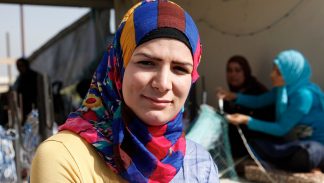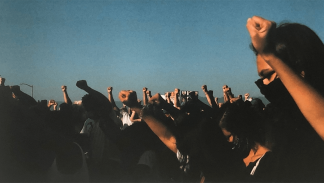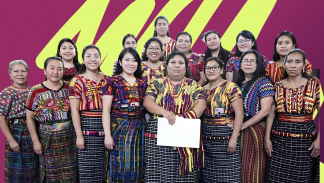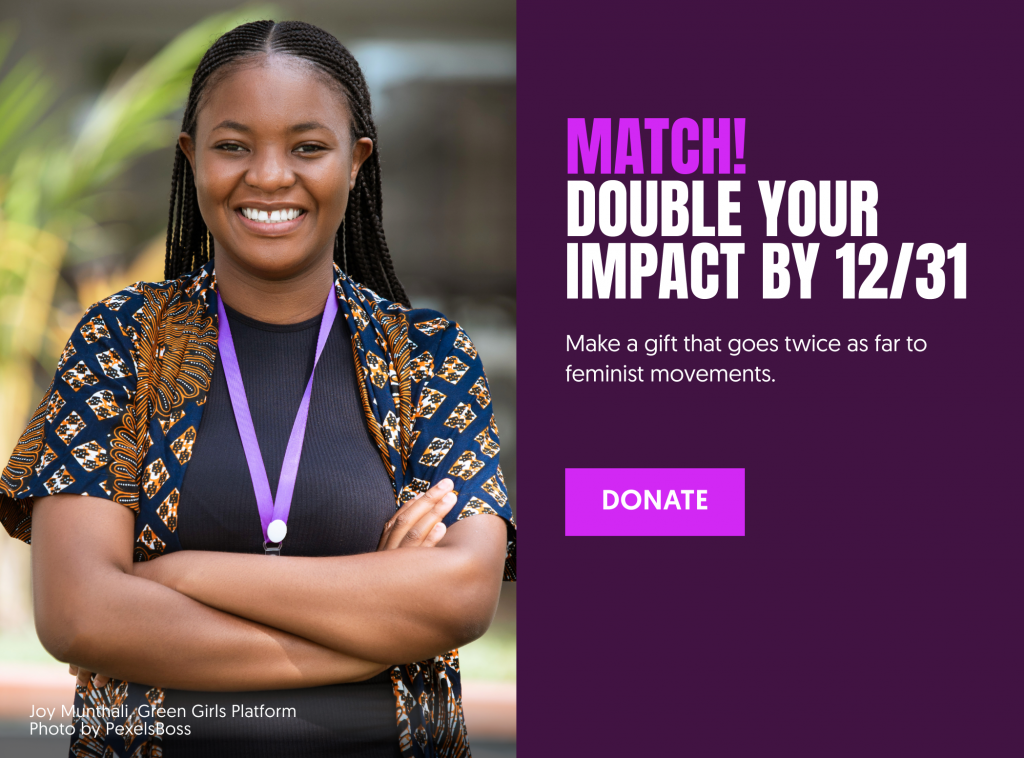“We’re All in This Together:” How Grassroots Women are Leading the Fight Against Climate Change
As a child growing up in Kisoko, Uganda, Constance Okollet was used to a life of bounty. Her parents were smallholder farmers who, armed with just a hoe and a confidence in the seasons, produced an abundance of food. In between harvests, the rain brought enough water to replenish the ground, refresh their wells, and fill the land around them with fruit and wild greens. Assured by the earth, the community thrived. Constance does not remember much hunger, sickness, or disaster during those times. Those, she says now, were the good days.
Like her parents and grandparents before her, Constance also became a farmer. But unlike her parents, Constance faced new challenges: unnatural changes in the weather. Rains were heavier and longer. Dry seasons turned into drought. In fall of 2007 Constance’s village had several months of deluge, wiping out the crops. Then one day, in what was usually the dry season, the heaviest rain they had ever experienced came down. Within a few hours, water began to engulf Constance’s compound. In that minute, she knew she had to flee. Constance and her husband quickly gathered their children and ran to higher ground with the rest of their community. They faced the grim knowledge that everything they left behind – their homes, animals, crops, and any neighbors who had not made it out – were being washed away in the flood.
Since then, Constance’s community has seen ongoing cycles of flood and famine. Constance spoke of the impact of these experiences at the World Affairs Council event, Women’s Role in Climate Justice, alongside former President of Ireland Mary Robinson, and Global Fund for Women CEO, Musimbi Kanyoro held in September. “We thought God was punishing us,” Constance says of her community, which had never seen repeated cycles of destructive weather like the ones they were now routinely experiencing. But they soon began hearing about the impact of greenhouse gases, which largely have come from other countries like the US and other fossil-fuel consuming nations. “Then we learned it was due to the lives of rich people.”
The international dialogue to address climate change tends to focus on science, development, or policy. But fundamentally, it is critical that the solutions to climate change protect the rights of those on the frontlines – the grassroots communities who, despite being the least responsible for climate change, are forced to feel the brunt of its impact. This fight for their rights is the heart of climate justice.
Unfortunately, global leaders’ solutions are not advancing as fast as the planet is changing. In her book, Climate Justice: Hope, Resilience, and the Fight for a Sustainable Future, Mary Robinson shows how women like Constance have decided to take their futures into their own hands. “Climate change has come to stay, but we should try to fix things,” Constance told her neighbors. Rather than waiting on developed countries to halt climate change, Constance mobilized her community to reduce their own small impact and work within changing climate patterns. For example, she led her village in re-planting trees they once cut down for firewood. These new roots of mango, orange and avocado trees prevent soil from washing away in floods and bear precious fruit. “There is more food,” she says, “and there is more life. So now there is more hope.”
There are thousands of women like Constance around the world who are determinedly leading grassroots efforts for climate justice. However, the crucial roles of these women continue to be under-recognized and under-funded. Women produce up to 80% of the world’s food. And yet they receive only 0.1% of foundation grants for environmental funding.
Global Fund for Women stands with the women at the frontlines of climate change. We put money in their hands so they can advance their own solutions to help safeguard the fates of their communities. We also work with other women’s funds to build a common understanding of funding at the intersection of women and the environment and to underscore the importance of supporting women-led groups combatting climate change. “These women are the leaders,” says Musimbi Kanyoro, “and we need to make sure their voices are heard, not just in their communities, but also where decisions are being made.”
The results of our grantee partners show just how powerful women’s solutions can be. In Burkina Faso, where crops are dying across the country from drought, women have installed irrigation systems, trained their communities in water conservation, and prevented the desert’s encroachment on to fertile lands. In India, women have come together to create collective farms for landless and marginalized Dalit women. Over 500 women now work proudly on these farms, growing millet and other traditional crops that not only feed their communities, but undo years of harm to the land. And in Uganda, women farmers have organized together to embed gender justice in climate change policy. Their voice is having impact with officials locally, regionally, and – in Constance’s case – across the world.
These are the women who are rallying, undaunted, to protect our planet from climate change. Their efforts have transformed our peril into courage, our uncertainty into resilience. And together, their fight for justice is having global impact to protect the rights of millions.
When we use the words climate justice, we have to remember that justice implies that there is injustice. And injustice implies that there is an imbalance somewhere. So the whole work of creating justice is to get the balance that you need. And this balance is as important for the environment as it is for people.Musimbi Kanyoro



